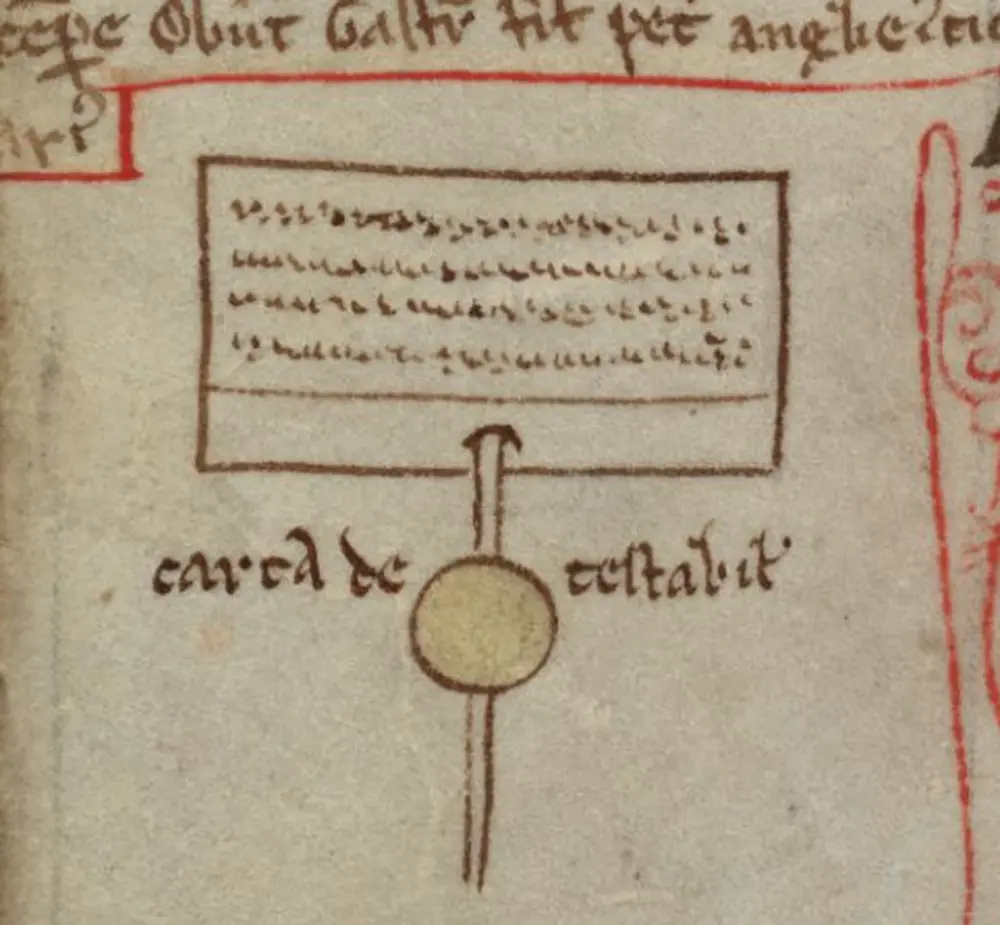
To celebrate the Program's 20th anniversary, Medieval Studies is proud to welcome back some of our distinguished alumni for a virtual lecture series throughout 2021-2022. For the third event in our Alumni Lecture series, we welcome Dr. Laura J. Whatley, Associate Professor of Art History in the Department of Fine Arts at Auburn University at Montgomery. Register for this Zoom event at https://illinois.zoom.us/meeting/register/tZEqcu-oqD8pGdEbWgSCwxN0ACWayUW0UlmM.
Seals and Sealing in the Thirteenth-Century Chronicles of Matthew Paris
Matthew Paris was a monk at the Benedictine monastery of St. Albans just north of London. He served as St. Alban’s official historian producing his Chronica Majora between c. 1220 and 1259, which survives in original manuscript in three volumes (Cambridge, Corpus Christi College MSS 16 and 26 and British Library Royal MS 14 C. VII). The chronicle is celebrated for its eye-witness accounts of events during the reign of Henry III (d. 1272), biting rhetoric especially regarding foreign affairs, and pen-and-ink illustrations in the monk’s own hand. To suggest that Matthew Paris was interested in documentary culture and record keeping in thirteenth-century England would be an understatement. Both text and image in the Chronica Majora reveal Matthew’s acute awareness of the power and authority of written records such as charters, letters, and papal bulls. Indeed, Matthew frequently rendered seals and sealed documents in the margins of the chronicle, often in close physical proximity to a textual discussion or copying of a document. Seals, as objects as well as images, appear in Matthew’s chronicle in one of three distinct ways. First, Matthew included numerous simple drawings of sealed writ in the margins (A). In these cases, the document is blank or has nondescript lines of “text,” and the seals are represented as round disks appended to the documents in outline or color. Second, Matthew would illustrate a complete visual record of the seal, including its iconography and legend(s). For example, he drew a detailed facsimile of the recto and verso of the imperial seal of Frederick II prominently in the text column, in which he describes a letter from Frederick to the king of England (B). And third, Matthew produced marginal drawings that closely correspond to sigillographic imagery, suggesting his general knowledge of seal iconography and an understanding of the role of seals to signify and embody (C). This presentation seeks to better understand the relationship between history writing and sealing culture in England as evidenced in Matthew’s historical manuscripts. It will consider text /image relationships, explore iconographic correspondence between drawings and real seals, and locate Matthew’s impulse to record sealed documents and seals within broader historical practices. Matthew Paris offers a unique paradigm for the use of seals in relation to documentary culture, the visual impact of seals, the recording of seals viz. the art of drawing, and the authentication of writ in relation to history writing.